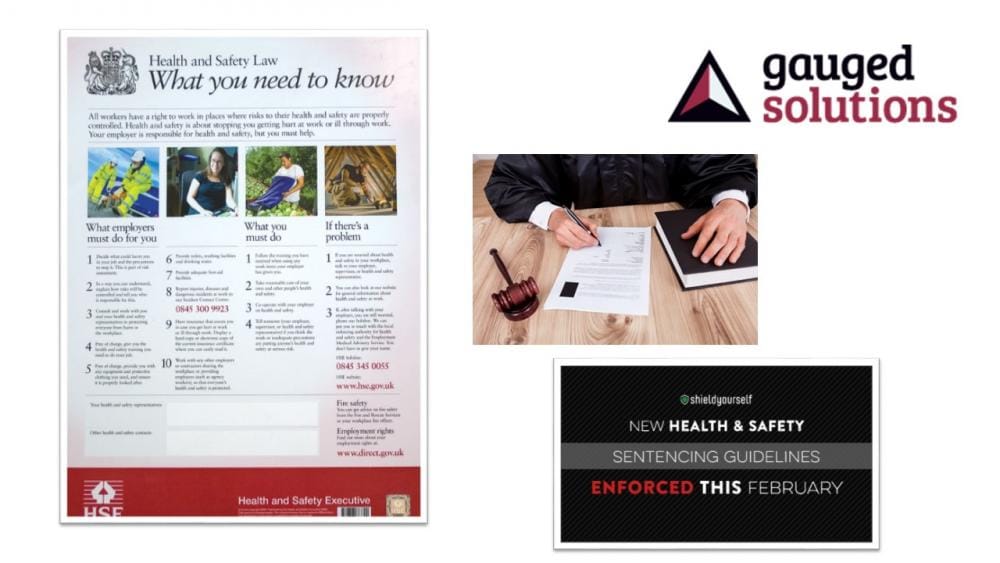
“We want to ensure that these crimes don’t pay. They can have extremely serious consequences and businesses that put people at risk by flouting their responsibilities are undercutting those that play by the rules and do their best to keep people safe…
[They] will help ensure a consistent approach to sentencing, allowing fair and proportionate sentences across the board, with some of the most serious offenders facing tougher penalties. We want to make sure it is clear that it will be cheaper to comply with the law than break it”.
Michael Caplin QC, Member of the Sentencing Council
I suspect that when the Sentencing Guidelines were first launched in February 2016 there was a little cynicism amongst the health and safety profession.
Had we not hear all of this before? Wasn’t that supposed to have been what the Corporate Manslaughter Act 2007 was designed to do? Didn’t we all attend or deliver a multitude of conferences or workshops on the subject? Didn’t we expect a flood of prosecutions under Corporate Manslaughter particularly in relation to occupational road risk? Much promise, but failed to deliver (sounds like one of my school reports!)
And yet …… we are seeing that these guidelines do have bite.
There have been a series of cases just in the last few months that demonstrate the court’s willingness to punish companies in their pockets:-
Date |
Company |
Description |
Fine |
| 1 June 2016 | Watling Tyre Services Ltd | An employee of Watling Tyre Service Limited of Kent, was repairing a puncture to the tyre of a ‘dresser loading shovel’ when it exploded. He was working on his own with inadequate work equipment which was not properly maintained, he was not trained or competent to undertake the work he was told to complete | £1M and £99K costs |
| 31 May 2016 | Leedale Ltd | Worker killed whilst refuelling and crushed when tipper reversed. No marked or identified vehicle and pedestrian routes. There were no rules or control of reversing manoeuvres, and the lighting at the site was poor and below the required standard. | £300K and £50K costs |
| 31 May 2016 | Scottish Power | Plant controller working at Longannet Power Station was injured when he opened a faulty valve which emitted high pressure, high temperature steam. He sustained serious burns to his chest and legs. | £1.75M |
| 19 May 2016 | Royal Mail | A worker’s foot was run over by a reach truck in a bundling warehouse where workplace transport was not organised to ensure pedestrians and vehicles can circulate safely as they both operated in the same areas without segregation. | £100K and £10K costs |
| 27 January 2016 | Balfour Beatty | Road worker killed whilst repairing central reservation barrier damaged in a road traffic collision. Lorry mounted crane slipped from the concrete footing whilst removing the footings of the post and swung back towards the barrier hitting the worker in the head | £1M and £15K costs |
No doubt, when the prosecution of Merlin Entertainment (Alton Towers Group) finally takes place following the injuries to passengers on The Smiler just over a year ago (June 2015) there is a belief that the fine may even exceed the current record of £15M held by Transco in 2005 following an explosion which killed four members of a family.
So, what, as a former personal injury lawyer and health and safety professional is my view on the sentencing guidelines and levels of fine? Will they make a difference?
Well, it certainly seems that the courts are far adopting the purpose of the guidelines and using the 8 step process in deciding on the level of fines based on culpability and harm balanced against mitigating factors and the pockets of the organisations and that the high fines are being awarded from injuries not just fatalities.
It will certainly be interesting to compare the outcome of Alton Towers where 4 people were injured to Transco where a family of 4 died to see how much has changed and how much mitigation demonstrated to date by Merlin reduces any fine.
Do I, however, think that these guidelines will reduce the number of serious health and safety incidents and injuries? Probably not. Whilst I welcome the fact that it gives the courts more structure, consistency, a starting point from which the judges can calculate a sentence using the evidence and their experience and it will potentially deter some companies to act unsafely, it will not be no panacea.
If previous fines and incidents were intrinsically linked to future safety performance then following BP Texas Disaster in 2005 (an incident that killed 15 workers and injured 170 and where both the BP and the U.S. Chemical Safety and Hazard Investigation Board reports identified numerous technical and organisational failings at the refinery and within corporate BP and led to fines/settlements of over $170M) there would have been no BP Deepwater Horizon.
In my view, the real benefits of the sentencing guidelines is the opportunity for health and safety professionals, in-company and consultants alike, to use them, and the recent caselaw, to open the door into the Board Room.
They should be part of a “what if” scenario, an opportunity to pose important questions, to ask “could this happen to us” and “how would this affect our business” and then use the opportunity to help identify issues or concerns within the business and get that all important commitment from the top.
If, after reading this blog, you would like further information on the Sentencing Guidelines or would like to discuss the opportunity for Gauged Solutions to present at one of your Board Meetings then please do not hesitate to contact Glenn Ridsdale on .+44 (0) 7425160071 or glenn@gauged-solutions.com